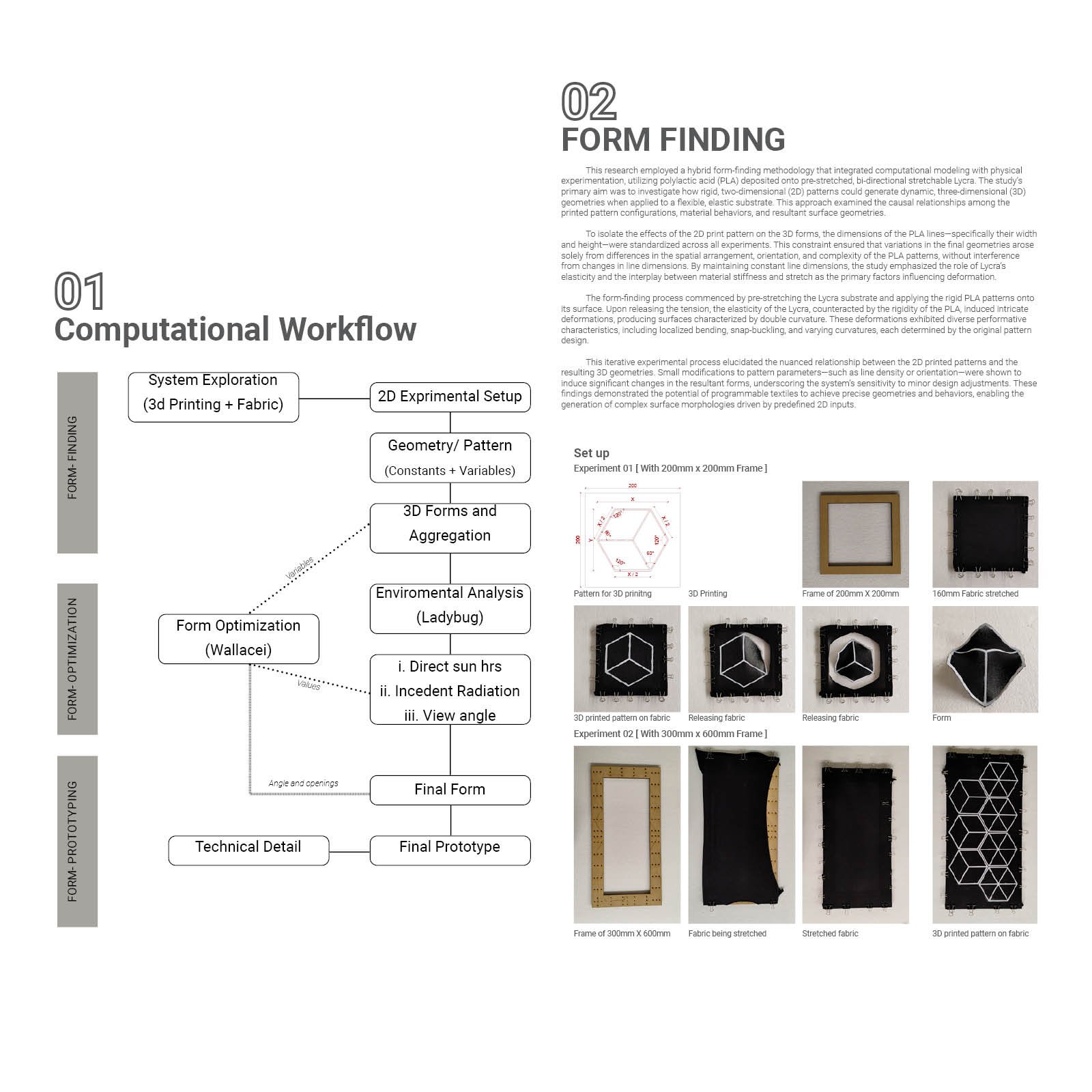Your browser is out-of-date!
For a richer surfing experience on our website, please update your browser. Update my browser now!
For a richer surfing experience on our website, please update your browser. Update my browser now!
This research investigates the characteristics of programmable textiles, focusing on how dynamic 3D surfaces can be generated by printing rigid 2D patterns onto pre-stretched fabric. The textiles demonstrate complex double-curvature geometries, influenced by factors such as material elasticity, bending resistance, and ambient temperature. However, the primary determinant is the initial 2D print pattern, where even minor variations can produce drastically different 3D surface curvatures. Through an extensive physical prototyping process, the relationship between 2D inputs and their corresponding 3D outputs was systematically explored. This process led to the development of designs with unique performative behaviors, including bending and snap-buckling mechanisms.







